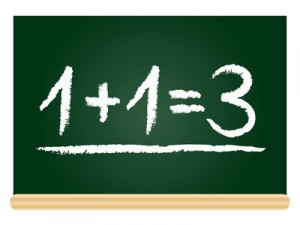We’re two days away from the official unveiling of the National Association of Realtor’s (NAR) revised existing home sales, and like many journalists and analysts, we await what will likely be a release of data that will greatly influence the views of many on the past five years in housing.
While we wait, though, it’s worthwhile to ask one big question – how, exactly, did NAR get its existing home sales data wrong?
Projections differ on the extent of the NAR’s revisions – CoreLogic and Calculated Risk, the original outlets to discover the faulty data back in January, project downward revisions of 15 to 20 percent – but all the NAR has said on the matter, courtesy of its Chief Economist, Lawrence Yun, has been that the revisions will be “meaningful,” according to a quote on CNNMoney.
Yun, in fact, has been the NAR’s public face in the run-up to the revisions, granting interviews and writing op-eds explaining NAR’s data collection strategies. As Yun tells it, the incorrect data is all because of for-sale-by-owners and the MLS.
“The biggest reason for the revision is a decline in for-sale-by-owners, with more sellers turning to real estate agents to market their homes when the market softened,” Yun wrote on HousingWire’s Commentary page. “In essence, Realtors began to capture a greater market share.”
According to Yun, that, in turn, inspired builders to market their new properties through real estate brokers, not the normal channels of existing-home sales, and the MLS data was then distorted.
Double counting, Yun wrote, also played a large factor in the faulty data. As he told the CNNMoney team, the NAR has been expanding its data coverage to new geographical areas, and because of that, some transactions are counted twice in existing-home sales data.
“Colorado Springs has their own database, but because the Denver market is nearby they may also list that home in the Denver database, so when the home gets sold, both Denver and Colorado Springs will say sales rose – so that’s genuine double-counting,” Yun said to CNNMoney.
“There are multifaceted reasons why things were drifting upward in our database,” Yun also said. “We have tried to adjust for all these factors so that we have a better understanding of total home sales in America.”
The NAR has been underplaying the extent of the upcoming revisions, and for good reason. Housing is just beginning to emerge from a tough couple of years, and nobody wants a bad batch of data to compromise the most recent gains. A new piece on Time magazine’s website, though, does bring to light some of the negative facts that could surround the new sales data.
“According to current NAR numbers, sales have fallen 31 percent from their 2005 peak. If CoreLogic’s numbers are closer to the truth, real estate transactions have actually dropped more like 50,” writes the article’s author, Stephen Gandel. “According to NAR’s current data, the number of homes sold this year will be the lowest since 1998. The revision, though, could knock the sales pace back to the mid-1980s.”
Gandel does, however, offer a silver lining to the projections, one that many have suggested in recent months.
“But the U.S. population and number of households had grown dramatically since then,” Gandel writes. “That suggests there might be more pent-up demand in the housing market, and that we could be closer to a rebound, than we thought.”
The NAR-related anomalies mark the second time this year that Chicago Realtors have had to adjust to data revisions. In June, the Illinois Association of Realtors admitted that it had overstated Chicago-area media sales prices by failing to incorporate 11 percent of the city’s sale records in its monthly calculations.

